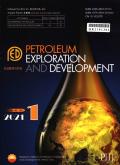Application of the whole petroleum system in the evaluation of the global natural gas hydrate resource
IF 8
Q1 ENERGY & FUELS
引用次数: 0
Abstract
Natural gas hydrate (NGH), as a widely recognized clean energy, has shown a significant resource potential. However, due to the lack of a unified evaluation methodology and the difficult determination of key parameters, the evaluation results of global NGH resource are greatly different. This paper establishes a quantitative relationship between NGH resource potential and conventional oil and gas resource and a NGH resource evaluation model based on the whole petroleum system (WPS) and through the analysis of dynamic field controlling hydrocarbon accumulation. The global NGH initially in place and recoverable resources are inverted through the Monte Carlo simulation, and verified by using the volume analogy method based on drilling results and the trend analysis method of previous evaluation results. The proposed evaluation model considers two genetic mechanisms of natural gas (biological degradation and thermal degradation), surface volume conversion factor difference between conventional natural gas and NGH, and the impacts of differences in favorable distribution area and thickness and in other aspects on the results of NGH resource evaluation. The study shows that the global NGH initially in place and recoverable resources are 99×1012 m3 and 30×1012 m3, with averages of 214×1012 m3 and 68×1012 m3, respectively, less than 5% of the total conventional oil and gas resources, and they can be used as a supplement for the future energy of the world. The proposed NGH resource evaluation model creates a new option of evaluation method and technology, and generates reliable data of NGH resource according to the reliability comprehensive analysis and test, providing a parameter basis for subsequent NGH exploration and development.
全油气系统在全球天然气水合物资源评价中的应用
天然气水合物(NGH)作为一种公认的清洁能源,已显示出巨大的资源潜力。然而,由于缺乏统一的评价方法,关键参数难以确定,全球天然气水合物资源评价结果差异较大。本文基于整体石油系统(WPS),通过对控制油气聚集的动态场分析,建立了NGH资源潜力与常规油气资源的定量关系和NGH资源评价模型。通过蒙特卡洛模拟反演全球NGH初始到位资源量和可采资源量,并利用基于钻井结果的体积类比法和以往评价结果的趋势分析法进行验证。提出的评价模型考虑了天然气的两种成因机制(生物降解和热降解)、常规天然气与NGH的地表体积换算系数差异、有利分布面积和厚度等方面的差异对NGH资源评价结果的影响。研究表明,全球NGH初始到位资源量和可采资源量分别为99×1012 m3和30×1012 m3,平均值分别为214×1012 m3和68×1012 m3,不到常规油气资源总量的5%,可作为未来世界能源的补充。所提出的NGH资源评价模型开创了评价方法和技术的新选择,并根据可靠性综合分析测试生成了可靠的NGH资源数据,为后续NGH勘探开发提供了参数依据。
本文章由计算机程序翻译,如有差异,请以英文原文为准。
求助全文
约1分钟内获得全文
求助全文

 求助内容:
求助内容: 应助结果提醒方式:
应助结果提醒方式:


